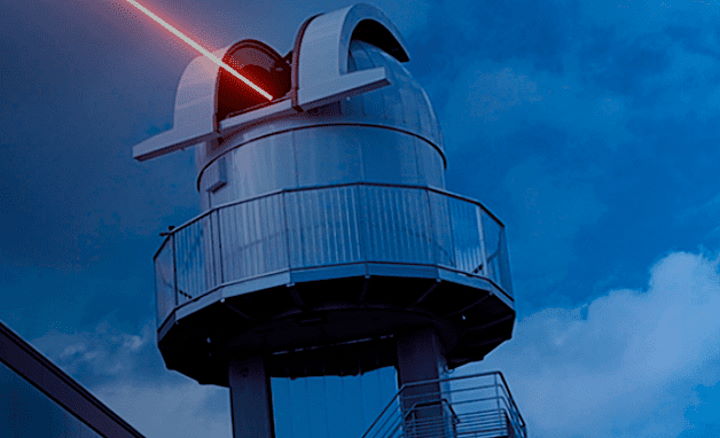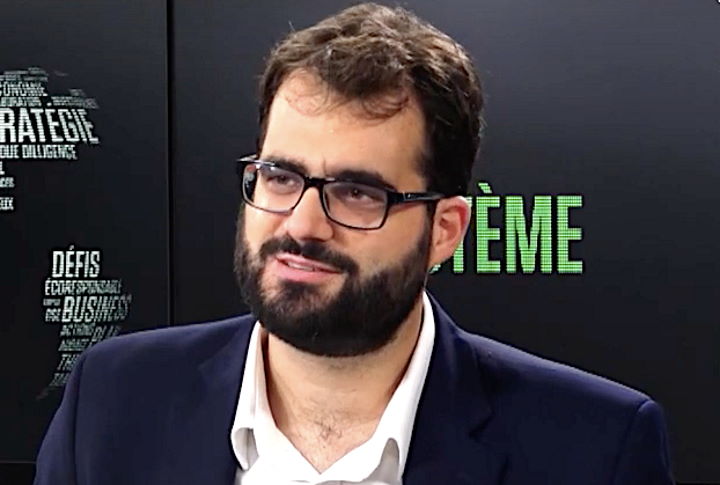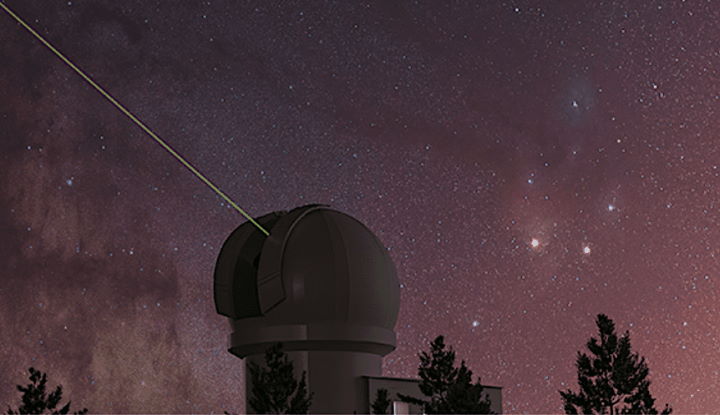 (Source: Cailabs)
(Source: Cailabs)
LA PLATA, Maryland — Startup optical beam-shaping technology provider Cailabs’ recent Series C financing raised 26 million euros ($27.6 million) in equity and will provide the company with at least 2-3 years of runway as it proves out its technology to compensate for atmospheric turbulence.
Rennes, France-based Cailabs expects that within the next year or so it will have demonstrate its Multi-Plane Light Conversion (MPLC) technology to compensate for most of the atmospheric disturbance of an optical signal as it travels from a satellite — or a ship or airborne platform — to a Cailabs ground terminal.
Cailabs in late 2021 signed an agreement with the French Defense Ministry’s Defense Innovation Agency (DIA) to conduct, with radio frequency-surveillance satellite constellation operator Unseenlabs, an experiment using an Unseenlabs satellite in low Earth orbit fitted with an optical terminal to communicate with a Cailabs ground station.
The experiment, called Keraunos, has not yet occurred but the satellite is expected to launch in the coming months.
In September, the Swedish Space Corp. (SSC) contracted with Cailabs to install an optical ground terminal at SSC, which is planning a network of optical stations as part of a contractor with the 22-nation European Space Agency (ESA). An optical terminal will be installed in Western Australia.
Cailabs’ Series C round, including 15 million euros from Luxembourg private-equity fund NewSpace Capital, brings to 42.6 million euros Cailabs’ total financing. In addition to this, it has received a 5.5-million-euro grant from AID. Series A and B rounds were concluded in 2017 and 2019.
Cailabs is a member of the New Symphonie consortium of mainly small companies that were contracted by the European Commission to study a constellation of secure communications satellites. The Commission is expected to begin sending out bid requests for the project early in 2023.
 Jean-François Morizur, CEO, Cailabs. (Source: Ecosysteme TV/Youtube)
Jean-François Morizur, CEO, Cailabs. (Source: Ecosysteme TV/Youtube)
Cailabs Chief Executive Jean-Francois Morizur discussed the company’s outlook.
Keraunos was supposed to be launched in 2022. What is its status?
The ground station is almost finished and the satellite is almost finished. Now we are in the last phase. The Cailabs ground station is at our site and completed, and a second is nearly finished and will be installed in Western Australia. And there will be one at SSC [Swedish Space Corp], which ordered one this summer.
Is Keraunos crucial for your company to test the satellite-to-ground technology?
It’s important, but it’s not only Keraunos. We have to demonstrate the functioning of the ground stations, so it’s not just this test that counts. There are other missions, some where we have partners, that give us other occasions to validate the ground stations.
Other orbital tests are already foreseen?
Yes, for 2023. They may be delayed but they are active. We never build the satellite terminals, just the ground stations. There is a cross benefit to validate interoperability in these tests. In other missions we will be the customer and we will finance the integration.
The Series C means you are financed for two years?
We already have revenue from other products, so what this permits is an acceleration. It’s difficult to say for how long. If we want to finance fast growth it could be 2-3 years. But it can be modulated.
We are not in a situation like some NewSpace companies that do little or no revenue.
What makes his credible is that we have the means to execute and the expertise to do it. We will have a model ground station compatible with lots of satellites.
The 26 million euros is dedicated for the space part of your business, correct?
A small portion of it could be dedicated to other products, but it’s small compared to what we are doing in the space and stratospheric communications. So it’s satellite to ground, but also ship to ship, ground to drone — related subjects that we need to do given how close they are to the space business. There is a continuity between satellite to ground, and HAPS, the high-altitude platforms.
 (Source: Cailabs)
(Source: Cailabs)
There is a debate regarding quantum key distribution over whether it needs to be done from LEO or can be done from GEO.
Today, no one knows. There are lots of opinions. GEO satellite operators say it’s fine from GEO and LEO operators argue that it needs to be from LEO.
Our position is that optical communications will be needed, and lots of it.
First because of the frequency congestion. Second, because of throughput. Optical has higher throughput for a small terminal size, so it’s worth using optical LEO to ground for observation. There are people who want to do this, and right now. This is the easiest scenario: One satellite, downlink and you access the ground station.
This is not huge as a market in terms of the number of satellites. Ultimately, it could be GEO. I have seen interesting concepts for GEO links that are fabulous.
We know there will be a demand for optical and a demand for lasers.
The U.S. Space Development Agency (SDA) has done a lot to impose, through its contracts with industry, a standard for optical transmissions. Is this good news for you?
They have done an enormous amount. Our prospective customers systematically ask: Are you compatible with SDA? It has become a de facto standard. CCSDS [the Consultative Committee for Space Data Systems] is supposed to take over, but the SDA — with their contracts and the fact that they are about to meet their schedule — all this gives them a force in the market.
It is a situation where a massive buyer says: Here’s what I want. Logically, industry puts itself in position to meet that standard. Everyone needs to be compatible with them.
 CCSDS agency members
CCSDS agency members
It’s not a standard on which industry has reached agreement. But will CCSDS come up with something that is incompatible with the SDA? It’s possible, but why would they do that?
But SDA is not the last word on standards for space optics.1
Certainly not. But people have a tendency to follow a leader. European companies that have succeeded in furnishing the SDA demand. CCSDS will be creating other standards, but we will not define an alternative standard as if the SDA did not exist.
Are you agnostic on transmission standards?
The ground stations need to be compatible with everyone. The functions are different between terminals, but it’s not difficult to make them all compatible. It would be simpler if everyone had the same thing. Btu for the coming few years we have to be agnostic.
I have not seen much Cailabs involvement in ESA’s optical programs like ScyLight and HydRON.
These progress are complicated for us to enter because the [French space agency] CNES position on Artes [ESA’s telecommunications technology program] is ambivalent. We are a French company and we would need CNES support. In past products this has not been the case. It’s not ESA’s money, it’s money from the national agencies that is redistributed by ESA.
We would like to be in these programs. We can do interoperability tests but it’s sometimes complicated.
The results of ESA’s November ministerial conference show France is present, but only modestly, in the optical work.
CNES is responsible for industrial policy and decides this kind of thing. We are not going to depend on CNES industrial policy. We are going to do things we believe in and when it’s aligned with CNES industry policy, that’s great. But we will not limit ourselves to these subjects.
Cailabs is in the New Symphonie consortium under a study contract with the European Commission for the Commission’s secure connectivity constellation. What did you think of the process?
We understand we do not have the power of a major industrial prime, but we think many of the proposals we made will be adopted. One of them is that, before distributing quantum keys, start with distributing optical keys. With optical key distribution, you can go to higher orbits.
What was interesting is that the Commission wants to reserve a set portion of the program’s contracts for small companies. If the Commission wants to do something rapid, with certain functionalities, they should start with New Space.
Read more from Space Intel Report.
